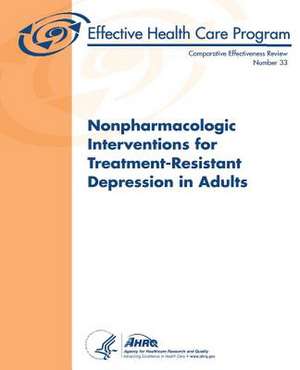Nonpharmacologic Interventions for Treatment-Resistant Depression in Adults
Autor U. S. Department of Heal Human Services, Agency for Healthcare Resea And Qualityen Limba Engleză Paperback
Preț: 441.81 lei
Preț vechi: 465.07 lei
-5% Nou
Puncte Express: 663
Preț estimativ în valută:
84.54€ • 90.40$ • 70.49£
84.54€ • 90.40$ • 70.49£
Carte disponibilă
Livrare economică 28 martie-11 aprilie
Preluare comenzi: 021 569.72.76
Specificații
ISBN-13: 9781484094525
ISBN-10: 1484094522
Pagini: 830
Dimensiuni: 191 x 235 x 42 mm
Greutate: 1.4 kg
Editura: CREATESPACE
ISBN-10: 1484094522
Pagini: 830
Dimensiuni: 191 x 235 x 42 mm
Greutate: 1.4 kg
Editura: CREATESPACE
